I'm looking into building my own LiFePO₄ pack and I have my eye on a 50 Ah, 3.2 V cell that goes for about €50. I need 36 V, so that's 12S or €600.
I want to be able to charge it fast. On the 3.2 V cell datasheet it says that it likes to charge at 0.5 C. I'm trying to find 20 to 25 A, 36 V (43 V) LiFePO₄ chargers and I'm having a very hard time finding any at all. There are none on the "reputable" source's website from which I'm planning on getting the cells, but looking at other (48 V, 60 V) chargers rated at 1000 W, they go for about €250+. The price of the battery is already quite a hit to my budget (yes, I am poor). I really was not prepared to spend half that on a charger (if I had found one at all), so naturally I started thinking how I can go around this.
I can easily get used PC PSUs from my job for free, which are rated at 500 W. Their 12 V rails can typically supply about 30 A, so if I wire two of them in series I'd get a 24 V, 30 A, 720 W supply. Then I could get something like the following for like $30:
Which claims 30 A input, which is perfect. I'd probably need to add some more fans but that's okay. I'm guessing output will be around 15 A at 43 V so the battery would need more than 2 hours to charge, which is far from ideal but for this price I'd say is more than acceptable.
If I set the voltage to 3.65×12=43.8 V which is said to be the maximum cell voltage, would that take care of the overvoltage problem? I mean how can cells get overcharged if the charging voltage is less than or equal to their maximum voltage?
Obviously, I have no idea what I'm doing and I'm still at the research phase, so I'm looking for advice. Is this even going to work or am I going to set my shop on fire? I know you will be tempted to tell me to get a proper charger and believe me I'd prefer that too, but it is just way out of my pocket.
